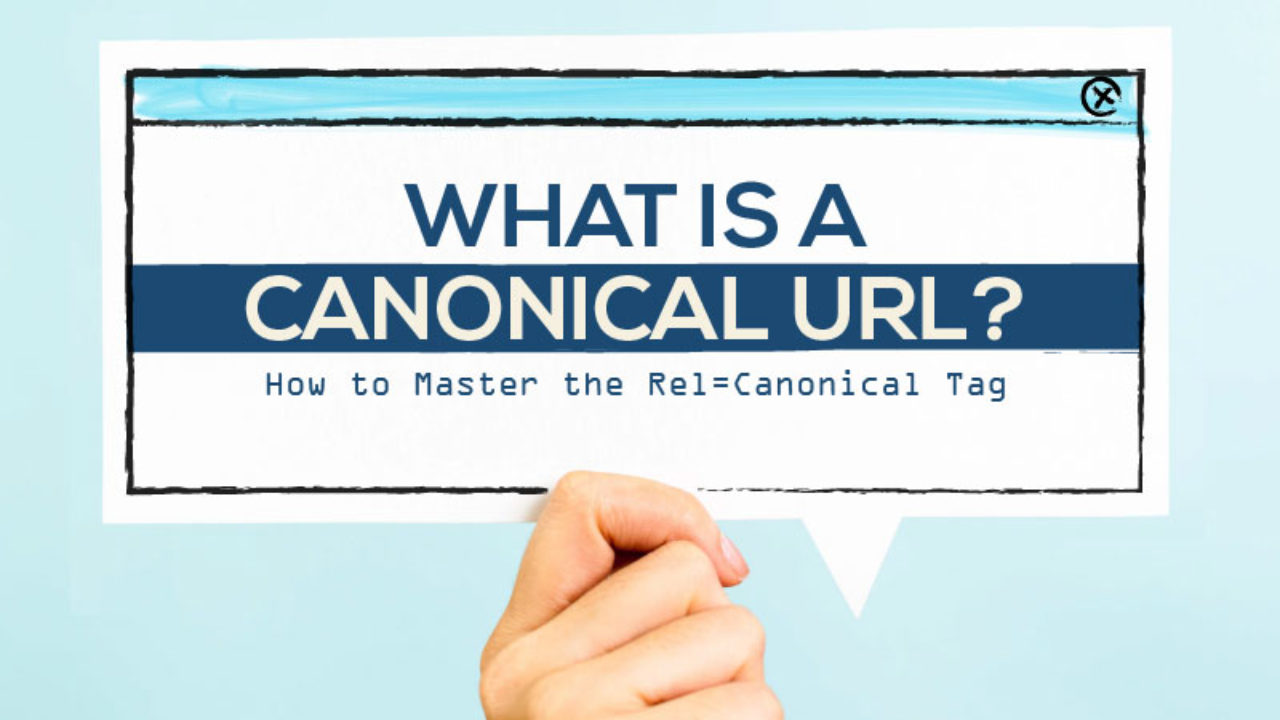What is a Canonical URL?

A canonical tag (aka “rel canonical”) is a way of telling search engines that a specific URL represents the master copy of a page. Web crawlers that a particular URL speaks to the ace duplicate of a page. Utilizing the sanctioned tag forestalls issues brought about by indistinguishable or “copy” content showing up on various URLs. Basically, the standard label tells web indexes which variant of a URL you need to show up in list items.
Code sample
For what reason does canonicalization make a difference?
Copy content is a convoluted subject, however when web indexes creep numerous URLs with indistinguishable (or fundamentally the same as) content, it can cause various SEO issues. In the first place, if search crawlers need to swim through an excess of copy content, they may miss a portion of your interesting substance. Second, enormous scope duplication may weaken your positioning capacity. At long last, regardless of whether your substance ranks, web crawlers may pick an inappropriate URL as the “first.” Using canonicalization causes you control your copy content.
The issue with URLs
For instance, search crawlers may have the option to arrive at your landing page in the entirety of the accompanying ways:
http://www.example.com
https://www.example.com
http://example.com
http://example.com/index.php
http://example.com/index.php?r…
To a pursuit crawler, however, each and every one of these URLs is a one of a kind “page.” Even right now, we can see there are five duplicates of the landing page in play.
Present day content administration frameworks (CMS) and dynamic, code-driven sites worsen the issue much more. Numerous destinations naturally include labels, permit different ways (and URLs) to a similar substance, and include URL parameters for look, sorts, cash choices, and so on. You may have a large number of copy URLs on your site and not understand it.
Accepted label best practices
Copy content issues can be incredibly dubious, yet here are a couple of significant interesting points when utilizing the standard tag:
1. Standard labels can act naturally referential
It’s alright if a standard label focuses to the present URL. As it were, if URLs X, Y, and Z are copies, and X is the accepted form, it’s alright to put the tag highlighting X on URL X. This may sound self-evident, yet it’s a typical purpose of disarray.
2. Proactively canonicalize your landing page
Given that landing page copies are normal and that individuals may connection to your landing page from numerous points of view (which you can’t control), it’s generally a smart thought to put a sanctioned tag on your landing page format to forestall unanticipated issues.
3. Spot-check your dynamic sanctioned labels
In some cases awful code makes a site compose an alternate accepted tag for each adaptation of the URL (totally missing the whole purpose of the standard tag). Make a point to spot-check your URLs, particularly on web based business and CMS-driven destinations.
4. Maintain a strategic distance from blended signs
Web indexes may evade an authoritative tag or decipher it mistakenly on the off chance that you impart blended signs. At the end of the day, don’t canonicalize page A – – > page B and afterward page B – – > page A. Moreover, don’t canonicalize page A – – > page B and afterward 301 divert page B – – > page A. It’s additionally commonly not a smart thought to chain authoritative labels (A- – >B, B- – >C, C– – >D), in the event that you can maintain a strategic distance from it. Impart clear signs, or you power web crawlers to settle on awful decisions.
5. Be cautious canonicalizing close copies
There’s a great deal of discussion on this point, yet It’s by and large alright to utilize accepted labels for fundamentally the same as pages, for example, an item page that lone contrasts by money, area, or some little item property. Remember that the non-standard renditions of that page may not be qualified for positioning, and if the pages are excessively extraordinary, web indexes may disregard the tag.
6. Canonicalize cross-space copies
In the event that you control the two locales, you can utilize the standard tag across areas. Suppose you’re a distributing organization that regularly distributes a similar article across about six locales. Utilizing the standard label will concentrate your positioning force on only one site. Remember that canonicalization will forestall the non-authoritative locales from positioning, so ensure this utilization coordinates your business case.
Authoritative labels versus 301 sidetracks
One basic SEO question is whether sanctioned labels pass interface value (PageRank, Authority, and so on.) like 301 sidetracks. As a rule, they appear to, yet this can be a hazardous inquiry. Remember that these two arrangements make two altogether different outcomes for search crawlers and site guests.
On the off chance that you 301 divert Page A- – >Page B, at that point human guests will be taken to Page B naturally and never observe Page A. On the off chance that you rel-standard Page A- – >Page B, at that point web crawlers will realize that Page B is sanctioned, however individuals will have the option to visit the two URLs. Ensure your answer coordinates the ideal result.